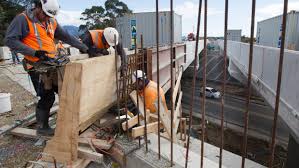
What many people are finding hard to credit is that, while we seem to be on the brink of a house building boom, construction companies are falling over. It’s like striking famine in the midst of plenty. So, what’s going on?
Some huge aspirational targets have been set to fix the housing crisis. They include the Kiwibuild target of putting up 100,000 ‘affordable’ houses in the next 10 years (50,000 in Auckland) and Housing New Zealand’s announcement last year of 34,000 new houses for Auckland by 2027.
It’s clear that demand far exceeds supply. Kiwibuild registrations in the first month were more than 35,000 people. Shared equity schemes offered by the non-profit Housing Foundation have elicited interest from over 7,500 families. The latest National Pipeline Construction Report estimates that dwelling consents are expected to exceed historic highs, reaching a level of 43,000 in 2023 (a construction value of $26.6 billion).
The non-residential sector – which includes hotels, offices, retail outlets and industrial buildings – is forecast to grow to a peak of $8.4 billion in 2019.
It just seems incongruous with targets like these that we should be seeing construction companies – big and small, residential and commercial – tipping over.
First of all, let’s have a thought for the business owners who have lost their businesses, and all the staff who have lost their jobs. The personal impact on the families who have been impacted and their wider communities is huge.
Then, let’s put the blame and shame instinct to one side long enough to appreciate that development is risky and complex – I’ve likened it to a more messy, real-time rubix cube.
Sure, property cycles can mean that one development with perfect timing will make significant profit but there are many other developments which barely break even and the media is replete with stories of failed developments and unlucky developers.
To achieve a successful development project there are a lot of levers that have to be pulled. And they all need to be pulled at more or less the same time. This demands an unusual skill set.
The skills begin with the commercial ‘smarts’ to conceptualise an opportunity where it doesn’t currently exist. Then, they include being able to bring everything together – understanding demand, developing a concept, leading a strong team of professional experts, ensuring that the financials work, masterplanning and consenting, funding deals and the marketing and sales strategy, even before you get to the construction phase.
To understand how challenging the whole process is, we need to confront the reality of ‘risk’. Because risk is a key issue for developers and construction companies.
- Development is a long term play – particularly for the larger developments, which span many years, meaning you might be managing through multiple property cycles.
- Funding can be a challenge for the more complex, long term, large scale projects. It’s a capital-intensive process and the challenge is to secure lines of credit over a long-term time frame.
- Where do you go for the funding? We saw the collapse of a number of finance companies after the Global Financial crisis. Finance companies were the main source of second-tier development funding. The banks even now aren’t totally filling that gap – which provides another stiff challenge in getting would-be development projects off the ground.
- Construction projects are tendered, but cost escalations, shortage of materials, lack of capacity within the construction industry all have the potential to impact the successful outcome of a project.
- There is a rich potential for delays, ranging from consenting and obtaining sufficient sales to advance the build through to weather and unexpected issues such as contamination. All of these factors have the ability to impact the potential feasibility of a development project.
- In the housing sector prefabrication has been talked about as a key initiative to solve the housing crisis. And it is! However, the reality for those in this sector includes the challenges of meeting compliance and regulatory requirements; consenting delays; financing difficulties and the time and delays in securing large scale government projects has put pressure on this sector.
- There is also scope here for basic human misjudgement. For example, in a highly competitive market you ‘sharpen your pencil’ and quote a fixed price that doesn’t allow for any reverses over the course of the development and may not produce the sort of margin you need to sustain your business. Winning the tender on this basis becomes a Pyrrhic victory – you win but you lose!
Going back to my rubix cube analogy, to successfully put big development projects together, everything needs to come into line. A change in one area of the development process can have an impact on many other parts.
We need to have a rethink on how the market works and look at models that work for all involved and ensure we can produce the outcomes we need.
We can find answers to the complex web of challenges associated with large scale development. Generally speaking, we won’t find them by reflexively pointing the finger of blame. Let’s be clear, though. I’m not arguing that we shouldn’t point the finger of blame when it can be shown that greed, or fast practice or incompetence are at work. But our priority has to be to produce solutions that will reinforce the confidence developers must have if they’re to commit to the building we desperately need in order to house our people.
I’m convinced that our process has to be based on partnership – meaning everybody in the building and development waka shares ownership of the problems and shares responsibility for coming up with constructive solutions. We’ll start getting somewhere when all the players – government, council, iwi, developers, the community housing sector and the finance community – focus in a common effort to resolve the barriers and blockages that exist.







